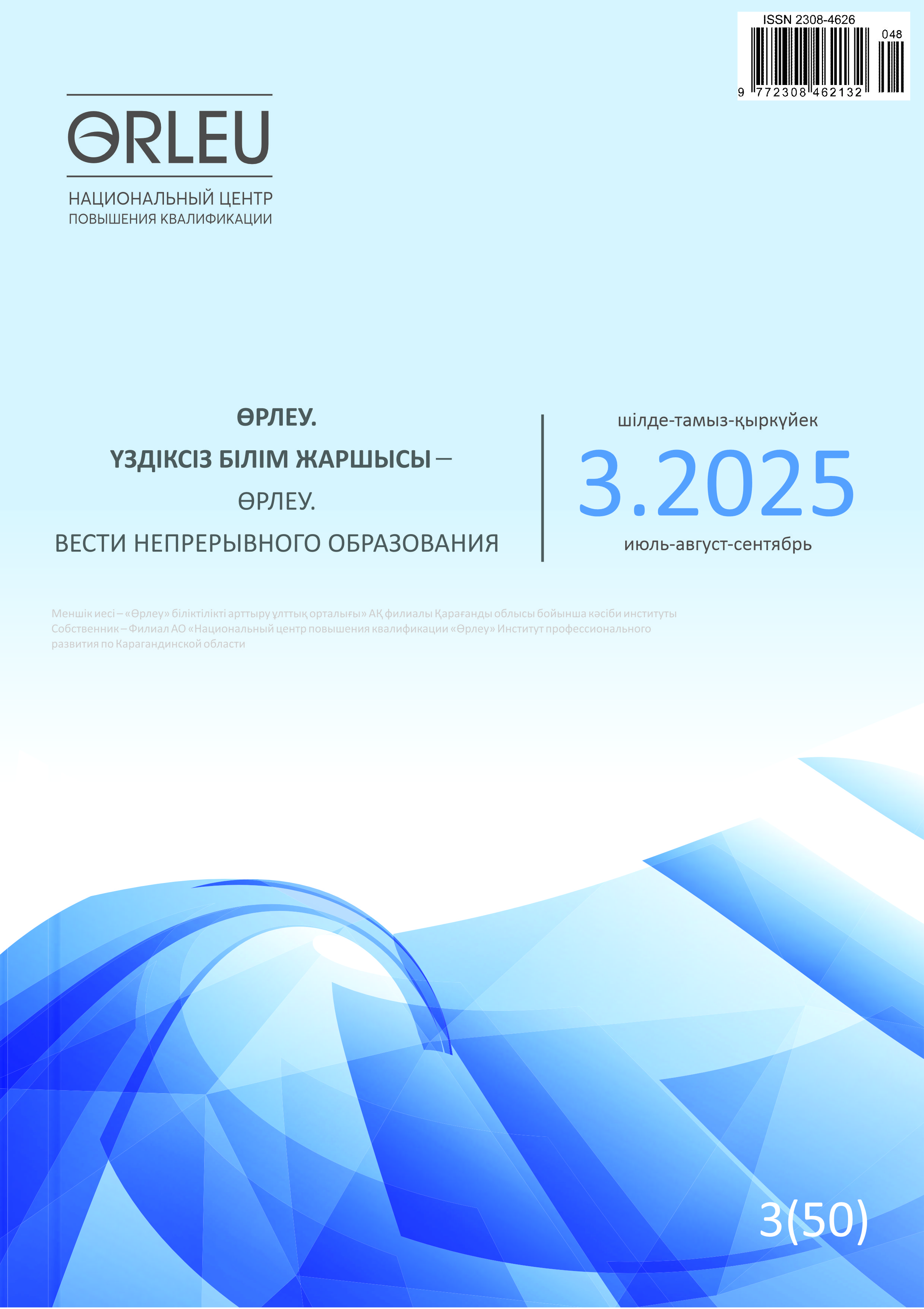Abstract
The article assesses the potential of CLIL technology for improving the scientific literacy of high school students in the context of the updated secondary education curriculum in the Republic of Kazakhstan. A theoretical review of domestic practices and international experience, as well as a comparison of the components of the 4C model (Content, Communication, Cognition, Culture) with the PISA science literacy framework confirm the methodological compatibility of the approaches. The empirical part is based on a survey of 180 teachers from 15 educational institutions in the city of Astana and the Karaganda region. The reliability of the measurement scales was confirmed by high Cronbach's alpha values: the overall indicator was 0.93.
Respondents demonstrate an average level of theoretical awareness of CLIL (mean (M) – 3.6 on a 5-point scale, standard deviation (SD) – 0.6) with high confidence in the implementation of the 4C components in terms of content and communication (Content – 72%, Communication – 65%), moderate confidence in thinking (Cognition – 58%) and the least confidence in the intercultural dimension (Culture – 39%). The overall attitude towards CLIL is positive and high (M=4.1; SD=0.6), which indicates a readiness to implement it with the necessary targeted support, primarily in terms of the cultural component and cognitive strategies.
At the same time, organizational and resource constraints are noted (lack of adapted materials – 75%, time for joint planning and teaching – 68%, digital resources – 45%) and the attitude of some teachers towards the “targeted” nature of CLIL primarily for strong students (69%). It has been shown that managerial and methodological solutions (joint planning, elements of joint teaching, a bank of bilingual PISA-like tasks with double rubric, modules professional development courses, updating assessment procedures) can expand the use of CLIL in mixed-level classes and create conditions for the systematic growth of PISA-related competencies. The conclusion is made about the feasibility of CLIL as a scalable mechanism for improving science literacy within the horizon of the Concept-2029 goals, provided that targeted support is given to schools.

